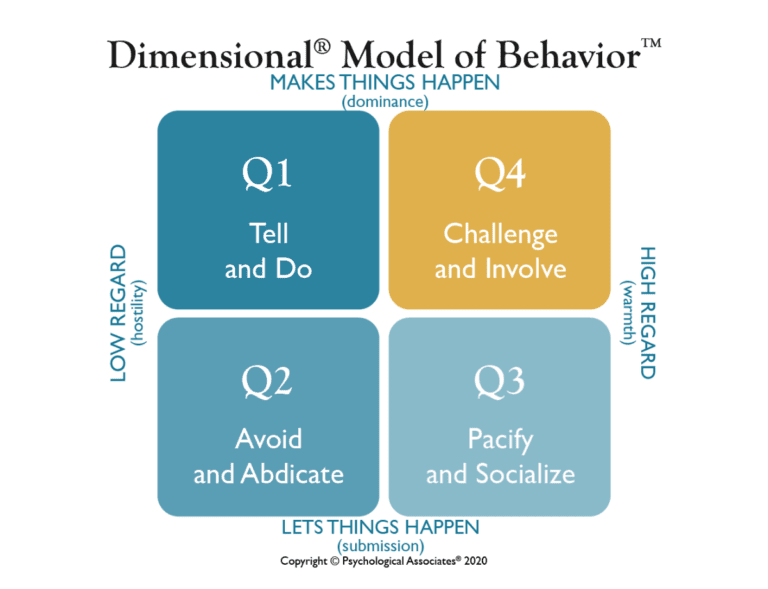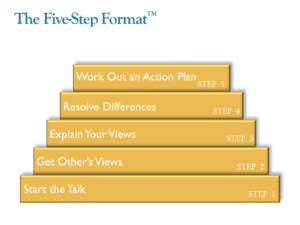Have you ever worked with a colleague who was phoning it in? He’s disengaged and apathetic. You’re not his boss, so you have no authority over him. So, how do you convince your colleague to pull his weight when you have no leverage? How can you influence him without authority? This case study explores options and suggests five things you can do to positively impact and influence your colleague, even when you lack formal authority.
The Situation
Dave works as a purchasing agent at a manufacturing company. His boss, Marie, has assigned Dave and a colleague, Mike, to work on a project together. She wants them to survey the firm’s suppliers about a new accounting system the company may adopt. As experienced company representatives, they can gauge reactions carefully and dispel any concerns suppliers might have about a possible change.
Dave hasn’t worked with Mike before. After leaving Marie’s office, he tries to discuss the assignment with Mike.
Aloof Coworker
Mike doesn’t say much. He shrugs when Dave asks him how they should cover the list of names. So, Dave suggests simply dividing it in half. Mike says, “Whatever,” and walks away with a shrug. This is known as Q2 behavior in our Dimensional Model of Behavior.

Putting Things Off
By the end of the week, Dave has called 10 names. He finds Mike and asks him how he’s doing on the project. “Oh, well, you know, I’ve been kinda busy. I called a couple of names and didn’t get through.” Dave makes a face but drops the subject. A few days later, he asks Mike about it again. Mike tells him he has gotten two responses but hasn’t been able to work on it more.
“Hey, look, you need to do what we agreed to. What’s going on? Any day now, Marie is going to be asking if we’ve talked with everyone. I’ll be finished with my names by Wednesday. What about you?”
Mike shakes his head, his gesture saying, “What can I say?”
Upset at Work
Dave is infuriated but doesn’t know what to do. He has no authority over Mike, and feels it would look bad to go to Marie about it. Since he can’t make Mike complete his work, Dave feels he will end up doing it for him.
Influencing Without Authority?
How can Dave deal with the Q2 apathy and seeming indifference of a peer? How can he influence without authority?

How to Influence Without Authority
It’s difficult enough to influence a peer whose behavior is challenging, but Q2 disengaged behavior creates even more exasperation.
However, rather than simply expressing his frustration, Dave should formulate a constructive approach if he’s going to get anywhere with Mike. He could have used two effective Q4 tools to draw out Mike to discuss his situation in detail.
The Five-Step Format™
First, Dave needs to follow the Five-Step Format for having a productive discussion. He should begin by stating a benefit to raise Mike’s receptivity. A good one would be that if they discuss the assignment, they can complete it on time. Mike seems to be making excuses and dodging the project. So, Dave should follow with Step 2, probing to understand Mike’s views fully. Dave can try to understand Mike’s resistance rather than simply pointing an accusing finger at him.
Probing for Understanding
This is the second tool Dave needs to use: plan a probing strategy to overcome Mike’s Q2 reluctance. Dave asked Mike challenging questions with a heavy dose of Q1 accusation behind them. He will get further to raise Mike’s receptivity by asking open-ended questions that invite Mike to answer in his own way: “Mike, I think something is bothering you about this project. What can you tell me about it?” Or “How can we work out getting this assignment done that’s fair for both of us?”
Then, Dave must be patient, going slowly and pausing often to let Mike tell his side of the story. Only after Mike gets a chance to speak his mind should Dave react and try to work out a solution together.
Perhaps, Mike resents their boss, Marie, for piling on the work. Maybe Mike doesn’t like Dave’s involvement in the assignment. Whatever the reason, Dave will accomplish more by drawing out Mike and resolving the issue using a Q4 approach.
Influencing Without Authority – 5 Keys
In summary, how do you influence when you have no formal authority? Interestingly, while authority certainly helps, you don’t need it to influence a peer. What you need are good Q4 leadership skills:
- Using the Five-Step Format
- Pointing out what’s in it for Mike to discuss this with you
- Probing to understand Mike’s concerns so that you can address them. Empathy goes a long way!
- Tailoring the Five-Step Format to the behavior you’re encountering. In this case, with Mike’s Q2 passive hostile behavior, being patient, going slowly, and pausing tend to be effective strategies.
- Working out a solution together. Don’t tell him what to do. His involvement in crafting a solution increases his commitment to executing.
With a peer, it’s just about the only strategy that will succeed.
Influencing Without Authority Training
Hopefully, this case study has helped you understand better how to influence without authority. However, this is a complex subject, and we’ve just scratched the surface.
Check out our Leadership Through People Skills book and our Leadership Learning page for more information.
Taking Action
Learning how to influence without authority is a great first step. To put these skills into action in your workplace, check out our Leadership Development resources. In particular, our Q4 Leadership workshops – available virtually or in-person – are an excellent tool for improving your effectiveness in dealing with a challenging coworker. Whether their behavior is mainly Q2, as it was here, or Q1 or Q3, the skills you’ll learn in this workshop are adaptable and can be applied immediately.
Here’s to your success as a leader!













